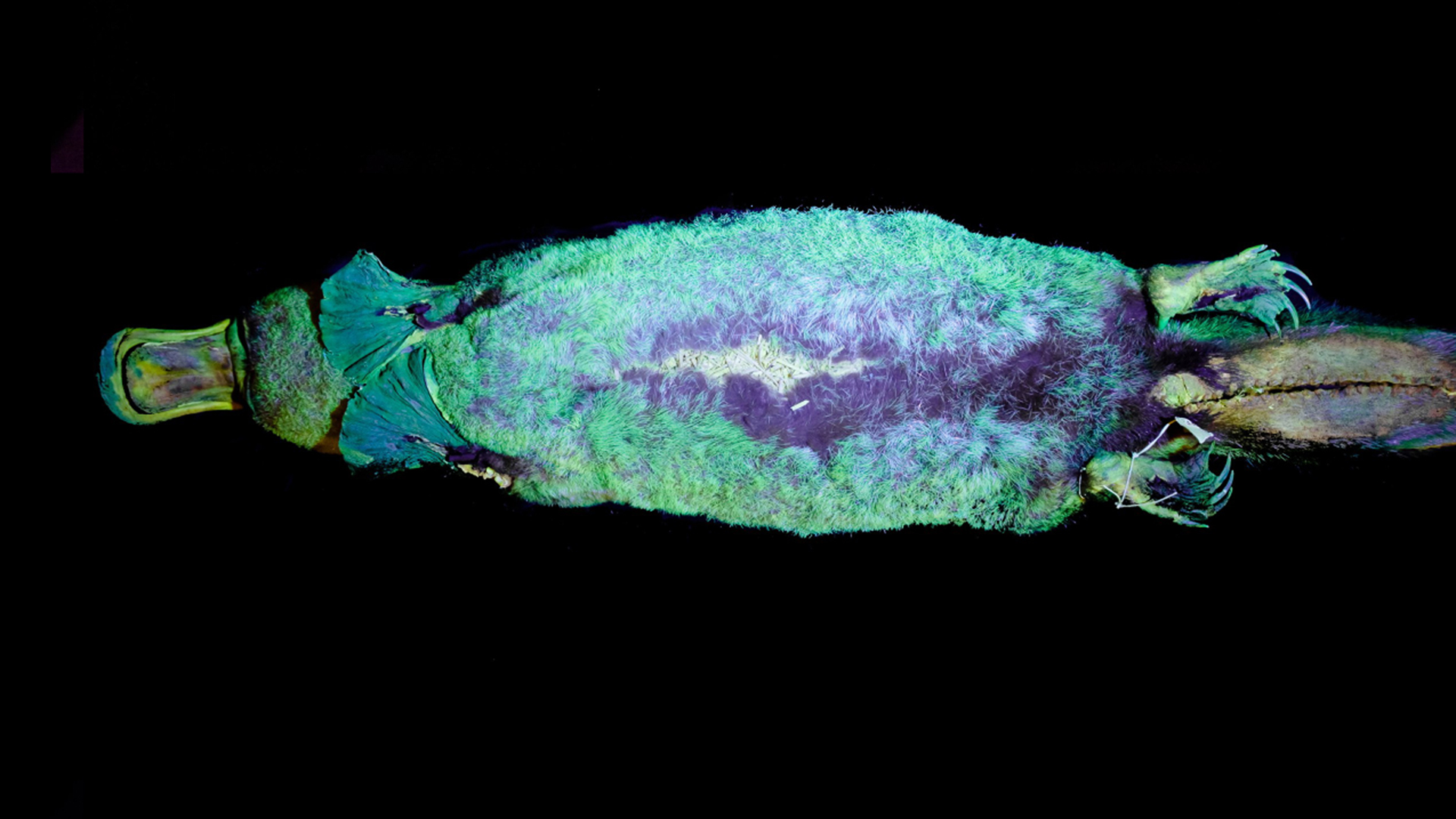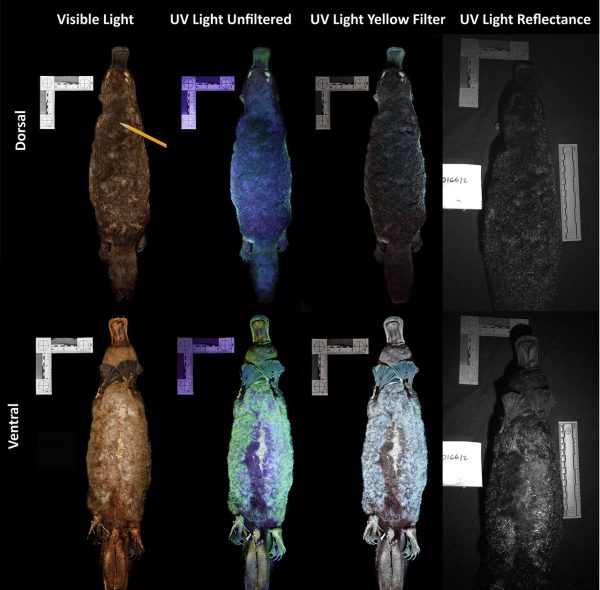Scientists Discover That Platypuses Glow Under UV Light

What happens when you shine a blacklight on platypuses? It glows a weird bluey green color. How come? It’s all to do with biofluorescence, a process observed in the natural world but not really understood.
A blacklight is a long-wave ultraviolet (UV) light. As with other light sources not detected by human eyes, it has wild effects on wildlife. Biofluorescence is when something, be it an animal or object, “absorbs light at one wavelength and emits it at a different wavelength” according to National Geographic. The resulting colors aren’t always blue and green, it depends on the species.
The story came to light, so to speak, thanks to research published in October’s ‘Mammalia’ scientific journal. A team including Paula Spaeth Anich and Erik R. Olson – Associate Professors of Natural Resources at Northland College in Wisconsin – published the findings.
Why does it happen? Good question! Experts haven’t been able to crack the code behind this colorful reaction. It could be connected to inter-species communication. It might be a survival instinct, obscuring the creature from hungry predators. Or it may be simply a redundant feature from centuries past.

However it works, the result fascinates scientists. Platypuses are especially noteworthy, as on the whole mammals don’t display biofluorescence. Sea-based life forms are among the likely candidates, though it’s not as if they stay still long enough for theories to be tested.
Come to think of it, mammals aren’t exactly super approachable either. That’s why it was helpful for boffins that the platypus was dead in the first place. Anich and Olson’s colleague Jonathan G. Martin, Associate Forestry Professor, is the man who inspired these illuminating antics. It all started with a flying squirrel.
As reported by the New York Times, he spotted the critter having a munch on a bird feeder. His torch beam hit the little visitor and Martin noticed a “bubble gum glow”. Martin wasn’t going to spend time chasing squirrels, so headed to Chicago’s Field Museum so he could shine a light to his heart’s content on long-dead specimens.
Accompanying him was Associate Prof Olson. Quoted by the Times, he began “wondering how broadly distributed this trait might be. Like, what about platypuses?”
The institution just so happened to have what the article refers to as a “platypus cabinet”. And it was here the biofluorescent discovery sparked imaginations.
For those wanting to see the evidence for themselves, visual information is available via a striking, Andy Warhol-esque composite. It contrasts a platypus lit by regular light, one by UV light and then yellow-filtered UV light. Anich was “a little flabbergasted” by the results, as noted by National Geographic.

Over in the Land Down Under, another platypus in a more unfortunate situation found itself under a blacklight. This was roadkill. But it gave the Northland College team encouragement that the reaction occurs in the wild. They haven’t performed the operation on a live platypus yet.
If they do manage to obtain one, they’d better be careful. Eccentric-looking the species may be, however the male carries venomous spurs on its feet for the unwary explorer.
Go back to 1985 and ‘Mammalia’ published a piece titled ‘Labile pigments and fluorescent pelage in didelphid marsupials’, written by Ronald H Pine (also associated with the Field Museum). It won’t exactly trip off the tongue for the uninitiated, but the marsupials in question are opossums. The largest order of their kind in the Western Hemisphere, they threw out all manner of colors in response to light sources.
So this isn’t exactly new information, but it does provide fresh and exciting insight into the subject. National Geographic writes biofluorescence is “more widespread throughout the animal kingdom than previously thought.”
Another Article From Us: Cher Welcomes “World’s Loneliest Elephant” to New Home in Cambodia
A platypus’s fur does more than just keep the cold out. As for what exactly this means, people will have to remain in the dark for now…
